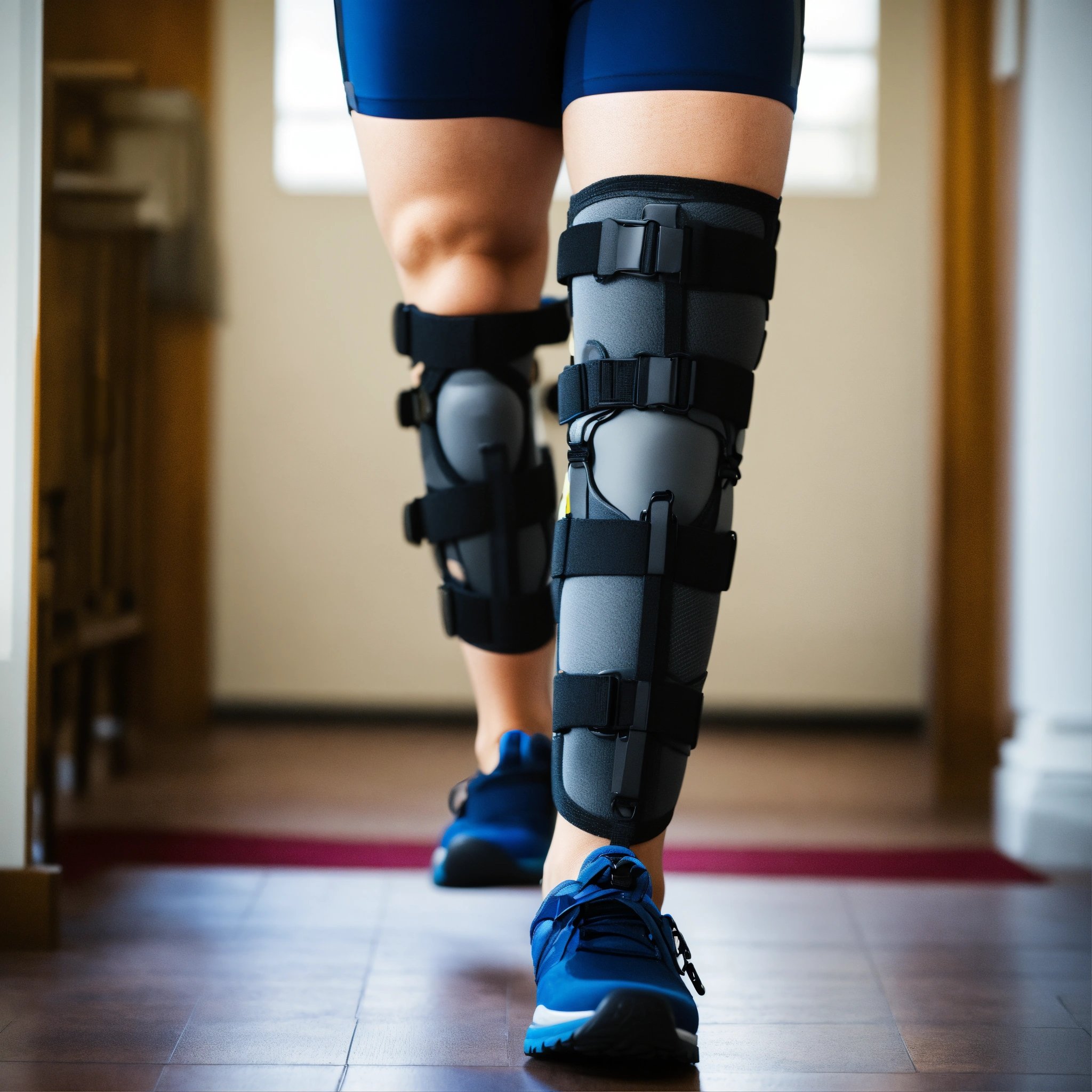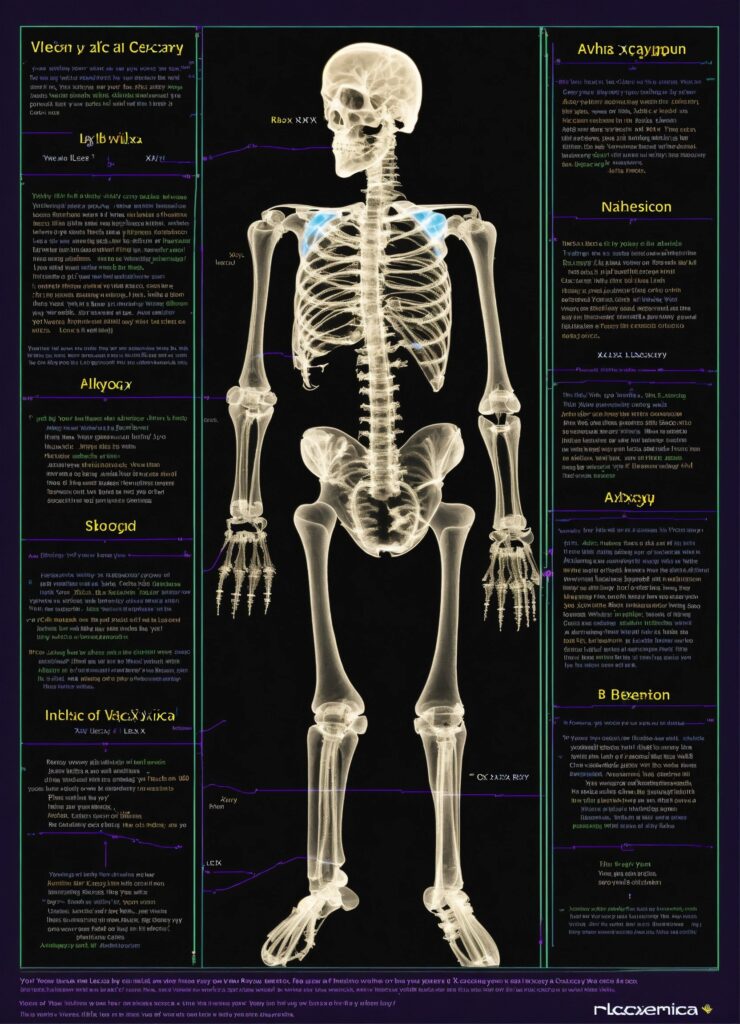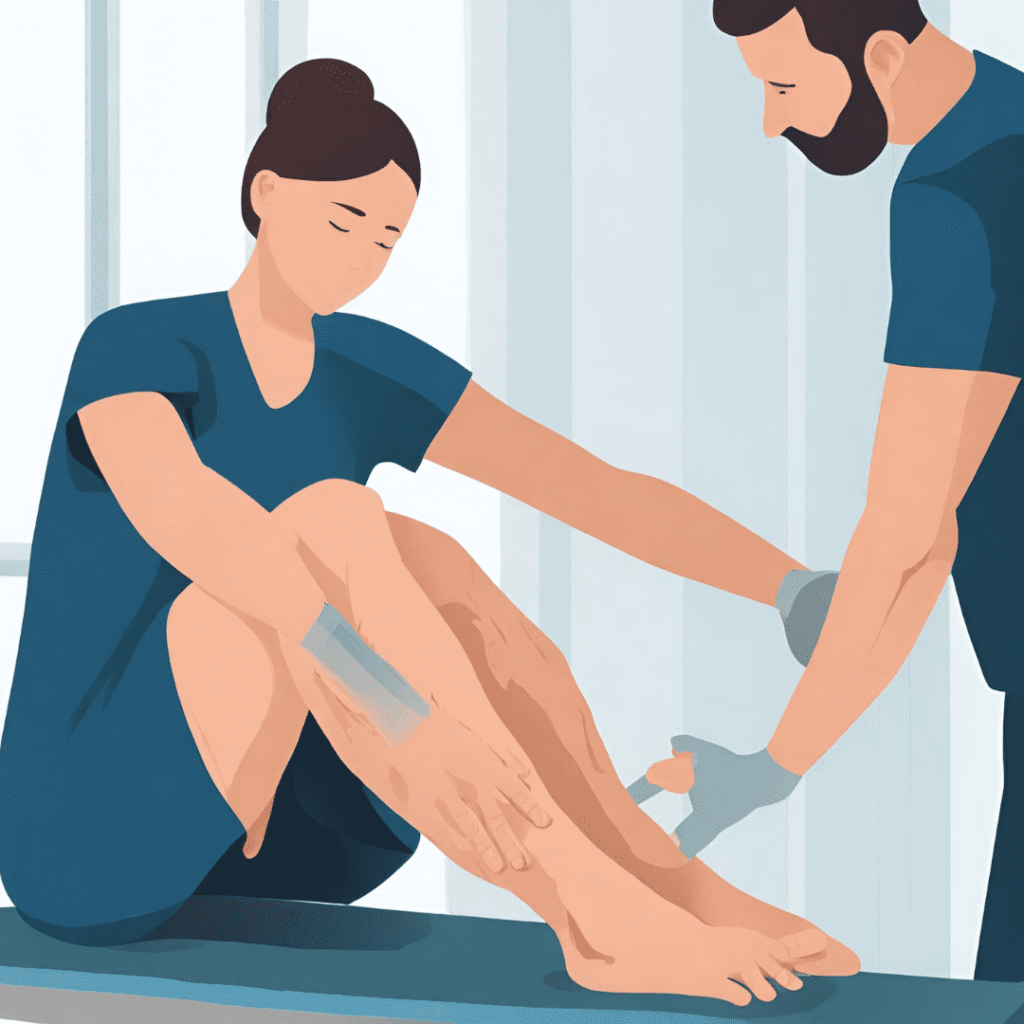Great Health Great Fitness
“Navigating Challenges: Rising Above Orthopedic Injuries and Trauma”
Embark on a journey of resilience with 'Navigating Challenges,' a guide dedicated to overcoming orthopedic injuries and trauma. Discover strategies to rise above setbacks, from understanding the nature of orthopedic injuries to navigating the path of rehabilitation and recovery. With determination and guidance, you can transcend obstacles and emerge stronger on the road to healing.

Introduction
Orthopedic injuries and trauma present significant challenges to individuals, impacting their physical well-being, mobility, and overall quality of life. Whether caused by accidents, sports-related incidents, or degenerative conditions, these injuries can be debilitating and require comprehensive management strategies for recovery. In this comprehensive guide, we delve into the various aspects of orthopedic injuries and trauma, exploring their causes, treatment options, rehabilitation techniques, and the psychological impact they can have on individuals. By understanding these challenges and exploring effective strategies for overcoming them, individuals can navigate their journey towards recovery with resilience and optimism.
Understanding Orthopedic Injuries

Orthopedic injuries encompass a wide range of conditions affecting the musculoskeletal system, including bones, joints, muscles, ligaments, and tendons. Understanding the anatomy and mechanics of these structures is essential for comprehending the types and mechanisms of orthopedic injuries. From fractures and dislocations to sprains and strains, each injury has its unique characteristics and implications for treatment and recovery. In this section, we explore the common types of orthopedic injuries, their causes, symptoms, and diagnostic approaches.
Types of Orthopedic Injuries
Orthopedic injuries can be broadly categorized into acute and chronic conditions, each presenting distinct challenges and treatment considerations. Acute injuries typically result from sudden trauma or accidents, whereas chronic conditions develop over time due to repetitive stress or degenerative changes. Common types of orthopedic injuries include:
- Fractures
- Dislocations
- Sprains and Strains
- Tendon Injuries
- Ligament Injuries
- Cartilage Damage
Each type of injury requires a tailored approach to management, considering factors such as the severity of the injury, the individual’s overall health, and their specific functional goals.
Causes and Risk Factors
Orthopedic injuries can occur due to various factors, including accidents, sports activities, overuse, and underlying medical conditions. Understanding the causes and risk factors associated with these injuries is crucial for implementing preventive measures and reducing the likelihood of recurrence. Common causes and risk factors include:
- Traumatic Injuries: Falls, vehicle accidents, and sports-related incidents can cause fractures, dislocations, and other orthopedic injuries.
- Overuse and Repetitive Stress: Activities that involve repetitive motions or excessive strain on the musculoskeletal system can lead to injuries such as tendinitis and stress fractures.
- Aging and Degenerative Changes: As individuals age, the risk of orthopedic conditions such as osteoarthritis and degenerative disc disease increases due to natural wear and tear on the joints and soft tissues.
- Poor Posture and Body Mechanics: Incorrect posture and improper body mechanics during daily activities or exercise can contribute to musculoskeletal imbalances and increase the risk of injury.
- Genetic Factors: Certain genetic factors may predispose individuals to orthopedic conditions such as scoliosis or osteogenesis imperfecta, influencing their susceptibility to injuries.
By addressing these underlying causes and risk factors, individuals can take proactive steps to mitigate their risk of orthopedic injuries and promote long-term musculoskeletal health.
Symptoms and Diagnosis
Recognizing the symptoms of orthopedic injuries is essential for timely intervention and appropriate management. While the specific symptoms may vary depending on the type and severity of the injury, common signs include pain, swelling, limited range of motion, and instability. Diagnostic imaging techniques such as X-rays, MRI scans, and CT scans are often used to assess the extent of the injury and guide treatment decisions. In addition to imaging studies, a thorough physical examination and evaluation of the individual’s medical history are essential for accurate diagnosis and formulation of a comprehensive treatment plan.
Treatment Approaches for Orthopedic Injuries

The treatment of orthopedic injuries is multifaceted, involving various modalities aimed at relieving pain, promoting healing, and restoring function. The optimal treatment approach depends on factors such as the type and severity of the injury, the individual’s overall health, and their functional goals. In this section, we explore the different treatment options available for orthopedic injuries, ranging from conservative measures such as rest and physical therapy to surgical interventions for more complex cases.
Conservative Management
Conservative management strategies are often the first line of treatment for orthopedic injuries, particularly in less severe cases or when surgery is not indicated. These approaches focus on alleviating pain, reducing inflammation, and promoting healing through non-invasive methods. Common conservative treatments include:
- Rest and Immobilization: Resting the injured area and immobilizing it with splints, braces, or casts can prevent further damage and promote tissue healing.
- Ice and Heat Therapy: Applying ice packs or heat packs to the affected area can help reduce pain and inflammation, improving comfort and mobility.
- Physical Therapy: Targeted exercises and stretches prescribed by a physical therapist can help restore strength, flexibility, and range of motion in injured muscles and joints.
- Pain Management: Over-the-counter or prescription medications may be used to manage pain and discomfort associated with orthopedic injuries, including nonsteroidal anti-inflammatory drugs (NSAIDs) and analgesics.
Conservative management is often effective for minor orthopedic injuries and can facilitate a faster return to normal activities with minimal intervention.
Surgical Interventions
In cases where conservative treatments fail to alleviate symptoms or when the injury is severe or complex, surgical intervention may be necessary to repair damaged tissues, stabilize fractures, or restore function. Orthopedic surgery encompasses a wide range of procedures, including:
- Fracture Repair: Open reduction and internal fixation (ORIF) techniques are commonly used to realign fractured bones and stabilize them with screws, plates, or rods.
- Joint Replacement: Total joint replacement surgery may be recommended for individuals with severe arthritis or joint damage, involving the removal of damaged joint surfaces and the implantation of artificial prostheses.
- Ligament Reconstruction: Surgical reconstruction of torn ligaments, such as the anterior cruciate ligament (ACL) in the knee, may be performed to restore stability and function to the joint.
- Arthroscopic Surgery: Minimally invasive arthroscopic techniques allow surgeons to visualize and treat joint injuries using small incisions and specialized instruments, reducing recovery time and postoperative pain.
Surgical interventions carry inherent risks and require careful consideration of the potential benefits and complications. Individuals undergoing orthopedic surgery undergo preoperative evaluation and postoperative rehabilitation to optimize outcomes and minimize the risk of complications.
Rehabilitation and Recovery

Rehabilitation plays a crucial role in the recovery process following orthopedic injuries, helping individuals regain strength, mobility, and function and prevent future complications. The goals of rehabilitation vary depending on the type and severity of the injury, as well as the individual’s specific functional needs and objectives. In this section, we explore the principles of orthopedic rehabilitation and the various techniques and interventions used to facilitate recovery and optimize outcomes.
Principles of Orthopedic Rehabilitation
Orthopedic rehabilitation programs are designed to address the unique needs of individuals recovering from musculoskeletal injuries or surgeries, focusing on restoring function, reducing pain, and improving overall quality of life. Key principles of orthopedic rehabilitation include:
- Individualized Treatment Plans: Rehabilitation programs are tailored to the specific needs and goals of each individual, taking into account factors such as the type and severity of the injury, the individual’s age and overall health, and their functional abilities.
- Multidisciplinary Approach: Orthopedic rehabilitation typically involves a multidisciplinary team of healthcare professionals, including physical therapists, occupational therapists, orthopedic surgeons, and rehabilitation nurses, working collaboratively to address the diverse needs of patients.
- Progressive Exercise Programming: Rehabilitation exercises are gradually progressed in intensity and complexity to challenge the musculoskeletal system and promote strength, flexibility, and endurance.
- Patient Education and Empowerment: Educating patients about their condition, treatment options, and self-management strategies empowers them to take an active role in their recovery and make informed decisions about their health.
- Functional Training: Rehabilitation programs emphasize functional activities and movements that mimic real-life tasks, helping individuals regain independence and confidence in performing daily activities.
By adhering to these principles and incorporating evidence-based interventions, orthopedic rehabilitation programs can facilitate optimal recovery and long-term success for individuals with musculoskeletal injuries.
Rehabilitation Techniques and Interventions
Orthopedic rehabilitation incorporates a variety of techniques and interventions aimed at improving mobility, strength, proprioception, and functional performance. Some common rehabilitation modalities include:
- Therapeutic Exercise: Targeted exercises and stretching routines prescribed by a physical therapist can help improve muscle strength, flexibility, and joint range of motion, addressing specific deficits and functional limitations.
- Manual Therapy: Hands-on techniques such as joint mobilization, soft tissue massage, and manual traction are used to alleviate pain, improve joint mobility, and enhance tissue healing.
- Neuromuscular Re-education: Neuromuscular re-education techniques focus on improving proprioception, balance, and coordination to enhance motor control and movement efficiency, reducing the risk of falls and re-injury.
- Gait Training: Gait training programs help individuals regain normal walking patterns and biomechanics following orthopedic injuries or surgeries, promoting safe and efficient ambulation.
- Assistive Devices and Orthotics: The use of assistive devices such as canes, walkers, or orthotic braces may be recommended to support and stabilize injured joints, facilitating mobility and independence during the recovery process.
By incorporating a combination of these techniques into comprehensive rehabilitation programs, individuals can achieve optimal outcomes and successfully return to their pre-injury level of function.
Psychological Impact and Coping Strategies
Orthopedic injuries can have a significant psychological impact on individuals, affecting their emotional well-being, self-esteem, and quality of life. Coping with the physical limitations, pain, and uncertainty associated with these injuries requires resilience, adaptation, and support from healthcare professionals, family members, and peers. In this section, we explore the psychological aspects of orthopedic injuries and trauma and discuss effective coping strategies for promoting mental health and well-being during the recovery process.
Psychological Reactions to Orthopedic Injuries
The experience of sustaining an orthopedic injury can evoke a range of emotional responses, including:
- Anxiety and Fear: Individuals may experience anxiety and fear about the extent of their injury, the potential for complications, and the uncertainty surrounding their recovery and future mobility.
- Depression and Sadness: Chronic pain, functional limitations, and changes in lifestyle associated with orthopedic injuries can lead to feelings of sadness, hopelessness, and depression.
- Anger and Frustration: Coping with the physical pain and limitations imposed by orthopedic injuries can trigger feelings of anger, frustration, and irritability, particularly when individuals are unable to participate in activities they enjoy or maintain their independence.
- Loss of Identity: For athletes or individuals with active lifestyles, sustaining an orthopedic injury can result in a loss of identity and self-esteem, as they may no longer be able to participate in their chosen sport or activities at the same level as before.
Recognizing and addressing these psychological reactions is essential for promoting emotional well-being and facilitating the recovery process.
Coping Strategies and Support Systems
Coping with the challenges of orthopedic injuries requires a multifaceted approach, incorporating both individual coping strategies and support from healthcare providers, family members, and peers. Some effective coping strategies include:
- Positive Self-Talk: Maintaining a positive outlook and reframing negative thoughts can help individuals cope with the challenges of orthopedic injuries and foster resilience and optimism.
- Setting Realistic Goals: Setting achievable short-term and long-term goals for recovery can provide individuals with a sense of purpose and motivation, helping them stay focused and committed to their rehabilitation efforts.
- Seeking Social Support: Engaging with family members, friends, and support groups can provide emotional support, encouragement, and practical assistance during the recovery process.
- Practicing Stress Management Techniques: Relaxation techniques such as deep breathing, mindfulness meditation, and progressive muscle relaxation can help individuals manage stress, anxiety, and pain associated with orthopedic injuries.
- Engaging in Meaningful Activities: Finding alternative ways to stay engaged and involved in activities that bring joy and fulfillment can help individuals maintain a sense of purpose and identity despite their physical limitations.
By implementing these coping strategies and leveraging support from their social networks, individuals can navigate the challenges of orthopedic injuries with resilience and perseverance.
Conclusion
Orthopedic injuries and trauma present significant challenges to individuals, impacting their physical, psychological, and emotional well-being. However, with comprehensive management strategies and effective coping mechanisms, individuals can rise above these challenges and embark on a journey towards recovery and rehabilitation. By understanding the causes, symptoms, and treatment options for orthopedic injuries, as well as implementing evidence-based rehabilitation techniques and addressing the psychological aspects of injury, individuals can overcome adversity and achieve optimal outcomes. With resilience, determination, and support from healthcare professionals and loved ones, individuals can navigate their path to recovery with strength, hope, and perseverance. For More Information you can check our blogs “Celiac Disease: Triumphing Over Gluten Sensitivity for Vibrant Health”.
